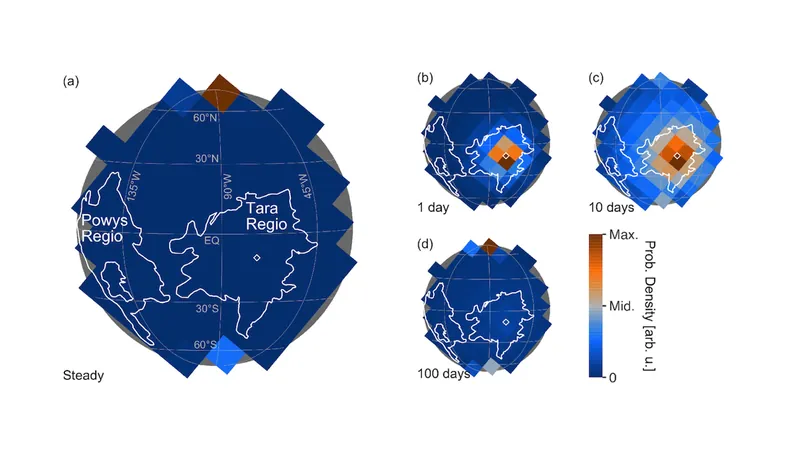
Is Europa's Surface Hiding a Secret? New Discoveries Hint at Active CO2 Supply!
2025-05-07
Author: Daniel
Recent observations from the James Webb Space Telescope (JWST) have unveiled a fascinating phenomenon: a build-up of carbon dioxide (CO2) around the young, dynamic terrains of Europa, specifically in the areas known as Tara Regio and Powys Regio.
What makes this discovery so intriguing is the uneven distribution of CO2, which points to a potential internal (endogenic) source of this gas within these geological formations. However, the timeframe for how quickly CO2 reaches the surface is still shrouded in mystery.
To delve deeper into this enigmatic CO2 distribution, researchers deployed Monte Carlo simulations. These sophisticated models take into account various factors, including sublimation, ballistic transport, and the loss of CO2 through photoionization. Here's the intriguing part: if we assume a hypothetical CO2 source is located at the equator, a CO2 molecule could migrate to the polar regions within approximately 10 days before being lost to photoionization.
This leads to substantial CO2 accumulation at the poles, leaving the equatorial area with surprisingly low CO2 levels under stable conditions. For the CO2 distribution patterns observed by the JWST to make sense, scientists speculate that a previously unknown process must exist to remove CO2 from the equator over 100 times faster than photoionization.
Such mechanisms could include the breakdown or ionization of CO2 due to high-energy particle irradiation. Given that this equatorial CO2 would dissipate quickly—either transported to the poles or broken down within a matter of days—it strongly suggests a continuous supply of CO2 to Europa's surface.
Further ongoing observations of Europa could shed light on the complex chemistry and dynamics of CO2 on this icy moon, tantalizing future research into one of the solar system's most captivating worlds.

 Brasil (PT)
Brasil (PT)
 Canada (EN)
Canada (EN)
 Chile (ES)
Chile (ES)
 Česko (CS)
Česko (CS)
 대한민국 (KO)
대한민국 (KO)
 España (ES)
España (ES)
 France (FR)
France (FR)
 Hong Kong (EN)
Hong Kong (EN)
 Italia (IT)
Italia (IT)
 日本 (JA)
日本 (JA)
 Magyarország (HU)
Magyarország (HU)
 Norge (NO)
Norge (NO)
 Polska (PL)
Polska (PL)
 Schweiz (DE)
Schweiz (DE)
 Singapore (EN)
Singapore (EN)
 Sverige (SV)
Sverige (SV)
 Suomi (FI)
Suomi (FI)
 Türkiye (TR)
Türkiye (TR)
 الإمارات العربية المتحدة (AR)
الإمارات العربية المتحدة (AR)